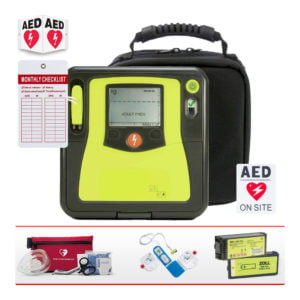The Significance of Patient Feedback in Enhancing Healthcare Quality
Patient feedback plays a crucial role in improving the quality of healthcare services. By actively listening to patients’ experiences, healthcare providers can gain valuable insights into their strengths and weaknesses, identify areas for improvement, and ultimately enhance the overall quality of care provided. This article explores the importance of patient feedback in healthcare and how it contributes to delivering patient-centric services.
Understanding the Power of Patient Feedback
Patient feedback serves as a valuable source of information for healthcare organizations. It provides firsthand accounts of patients’ experiences, allowing healthcare providers to understand the impact of their practices on individuals seeking care. By analyzing feedback, healthcare professionals can identify patterns, uncover recurring issues, and implement effective strategies to address them. Patient feedback serves as a compass, guiding healthcare providers in their mission to deliver excellent and patient-focused care.
The purpose of gathering and reflecting feedback
Doctors have a duty to listen to patients, consider their views, and honestly respond to their questions, as stated in Good Medical Practice. Reflecting on patient feedback helps doctors understand their experience, identify strengths, and find areas for improvement, leading to greater self-awareness and challenging assumptions.
Background
The process of GMC revalidation for doctors was implemented in 2012 and has since become an integral part of medical practice. Doctors working in intensive care, for example, have already undergone two revalidation cycles. However, the inclusion of patient feedback in this process has raised concerns among doctors who do not have regular patient interactions in traditional clinical or ward settings.
In 2020, the GMC issued revised guidance on patient feedback, introducing more flexibility. The key points of the guidance are summarized as follows:
Formal Feedback Exercise
During each revalidation cycle, doctors must reflect on feedback from patients that has been collected through a formal feedback exercise.
Feedback from Others
If doctors do not have direct patient contact, they should collect feedback from individuals to whom they provide medical services. In cases where collecting such feedback is deemed impractical, doctors must reach an agreement with their responsible officer on the necessity of collecting feedback.
Appropriate Feedback Collection
Feedback should be collected in a manner that is suitable for the patients and the specific context in which the doctor practices.
Additional Sources of Feedback
At each appraisal, doctors should reflect on any other sources of patient feedback available to them, such as unsolicited feedback, which provide valuable insights into their practice.
Comprehensive Coverage
Doctors should reflect on patient feedback that encompasses their entire scope of practice throughout each revalidation cycle.
Action and Discussion
Doctors must reflect on the feedback received, take appropriate actions if necessary, and discuss how the feedback has influenced their practice during their appraisal, ensuring a timely response.
The GMC has introduced more flexibility in the patient feedback component of revalidation. Doctors are required to reflect on feedback obtained through formal exercises or alternative sources, take appropriate actions based on the feedback, and discuss its impact on their practice during the appraisal process.
GMC Recognizes Patient Feedback as Vital
Patient feedback is regarded as an essential component in the medical profession, according to the General Medical Council (GMC). The GMC recognizes the significance of patient feedback and has made it a mandatory requirement in the assessment and evaluation processes for medical doctors. By actively seeking and considering feedback from patients, the GMC aims to ensure that healthcare professionals deliver high-quality care that meets patients’ needs and expectations. Patient feedback provides valuable insights into the doctor-patient relationship, the effectiveness of treatments, and overall patient satisfaction. It allows doctors to identify areas for improvement and fosters a culture of continuous learning and development.
The recognition of patient feedback as vital by the GMC emphasizes the importance of patient-centered care and instills trust in the medical profession. By incorporating patient feedback into the assessment process, the GMC promotes effective communication, empathy, and patient-centered decision-making. It encourages doctors to engage with patients, listen attentively, and address their concerns, ultimately fostering a positive doctor-patient relationship. This recognition highlights the GMC’s commitment to ensuring that medical doctors provide the highest standard of care, tailored to meet the individual needs of patients. By valuing and incorporating patient feedback, the GMC promotes a healthcare system that prioritizes quality, safety, and patient satisfaction.
The GMC’s requirements
The GMC requires healthcare professionals to engage in regular reflection on feedback from patients or others to whom they provide medical services. This feedback should be obtained through a formal feedback exercise, unless there are no patients available. In that case, the responsible officer must be consulted to determine if feedback collection is necessary.
The feedback collected should be appropriate for the patients and the working context. During each appraisal, healthcare professionals should also reflect on any other sources of patient feedback, such as unsolicited feedback, that provide valuable insights into their practice.
Throughout the revalidation cycle, it is important to consider patient feedback that encompasses the entire scope of practice. Timely action should be taken based on the feedback, and the impact it has had on practice should be discussed during the appraisal.
Principles for collecting and reflecting on patient feedback and how to apply them
Here are some principles for collecting and reflecting on patient feedback, along with guidelines on how to apply them:
Accessibility
Ensure that the process for collecting patient feedback is easily accessible to all patients. Use methods that accommodate diverse patient populations, such as providing options for anonymous feedback or utilizing different languages if needed.
Clarity
Clearly communicate the purpose and process of collecting feedback to patients. Explain how their input will be used to improve the quality of care and assure patient confidentiality.
Confidentiality
Maintain strict confidentiality of patient feedback to encourage honest and open responses. Patients should feel comfortable providing feedback without fear of repercussions.
Validity and Reliability
Use validated and reliable tools or methods for collecting patient feedback to ensure the accuracy and relevance of the information obtained. Consider using established survey instruments or working with experts in survey design if necessary.
Timeliness
Collect patient feedback in a timely manner to capture their experiences and perceptions while they are still fresh. Promptly address any issues raised to demonstrate a commitment to continuous improvement.
Scope
Gather feedback across the entire scope of your practice to obtain a comprehensive understanding of your performance. Consider feedback from various patient encounters and settings to capture a diverse range of experiences.
Reflection
Reflect on the feedback received from patients with an open mind and a willingness to learn. Consider both positive and negative feedback, identifying areas for improvement and areas where good practice can be sustained or further developed.
Action
Act on the feedback received in a timely manner. Address any concerns, make necessary changes, and implement strategies to improve the quality of care. Discuss the actions taken based on the feedback during your appraisal.
Continuous Learning
Use patient feedback as an opportunity for continuous learning and professional development. Consider how the feedback can inform your practice and guide future improvements.
Improving Healthcare Services through Patient-Centric Approaches
Enhancing Communication
Patient feedback highlights the importance of effective communication in healthcare settings. By carefully listening to patients’ concerns, healthcare providers can build trust, establish rapport, and ensure that patients feel heard and understood. Open and transparent communication cultivates a patient-centric environment, where individuals actively participate in their own care and decision-making processes.
Quality Improvement Initiatives
Feedback from patients provides valuable data for quality improvement initiatives. By identifying areas for enhancement, healthcare organizations can implement targeted changes to elevate their services. Patient feedback helps uncover gaps in care, allowing providers to develop evidence-based protocols, refine clinical practices, and improve patient outcomes.
Enhancing Patient Safety:
Patient feedback plays a crucial role in identifying potential risks and hazards within healthcare systems. By reporting incidents and near-misses, patients contribute to a safer care environment. This feedback enables healthcare providers to implement preventive measures, develop robust safety protocols, and minimize the occurrence of adverse events.
Empowering Patient Engagement
Patient feedback encourages active patient engagement in their healthcare journey. By valuing patients’ opinions, healthcare providers empower individuals to actively participate in their care plans. Engaged patients are more likely to follow prescribed treatments, adhere to medications, and adopt healthy lifestyle practices, leading to improved health outcomes.
Strategies for Effective Patient Feedback Collection
Anonymous Surveys
Conducting anonymous surveys allows patients to provide honest and unbiased feedback without any fear of reprisal. These surveys can be distributed electronically or in paper form, enabling patients to share their experiences at their convenience.
Patient Satisfaction Interviews
Engaging in one-on-one interviews with patients provides an opportunity to delve deeper into their experiences. These interviews facilitate open and detailed discussions, allowing healthcare providers to gain comprehensive insights into patients’ perspectives.
Focus Groups
Organizing focus groups allows multiple patients to come together and share their experiences collectively. This approach encourages interactive discussions, fostering the identification of common themes and issues.
Online Review Platforms
Leveraging online review platforms, such as dedicated healthcare websites and social media, enables patients to express their opinions and experiences publicly. Healthcare providers can monitor and respond to these reviews, demonstrating their commitment to patient satisfaction.
Conclusion
Patient feedback is an asset in healthcare quality improvement. By actively seeking and implementing patient feedback, healthcare providers can enhance communication, drive quality improvement initiatives, promote patient safety, and empower patients to be active participants in their care. Embracing patient feedback as a driving force behind continuous improvement fosters patient-centricity and helps deliver high-quality healthcare services that meet the needs and expectations of patients.



Leave a Reply
You must be logged in to post a comment.